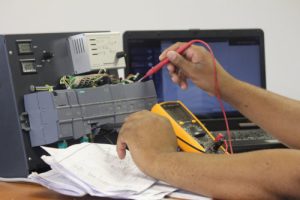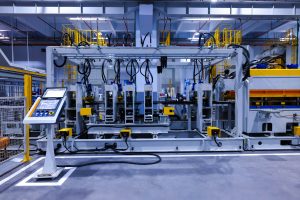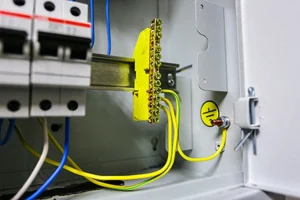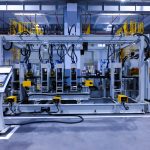In general, products are produced in the #manufacturing industries by carrying out a sequence of operations for process control. Furthermore, this sequence of operations can be implemented manually or automated (i.e. with the use of an #industrialcontroller). Some decades ago, #sequencing operations are carried out with the use of a large number of connected/wired relays to perform a specific task. Meanwhile, some drawbacks were encountered. This is due to the difficulty to reprogram the logic systems for changes in #industrial control applications as well as production changes. Subsequently, the relay control panel makes troubleshooting to be very difficult. However, PLCs was later invented and used to avoid these drawbacks experienced with the use of relay control panel.
PLC Features
A typical programmable logic controller offers many features including; • Compact size • Economical in cost • Can easily mountable • Uses #advancedtechnology • High-speed counter input (a few Kilo Hertz) • Powerful wide range of instruction sets. • Multi-digit alpha-numeric display such as fault messages, status mode, process parameters, etc.
PLC working Principle:
A Programmable Logic Controller is a computer-like controller that can handle both digital and analog signals received via discrete module and analog module (ADC / DAC) respectively, which related to logic statements to perform the desired tasks. The inputs and output signals are received/sent to the input/outputs #field’s devices. The working operation of a PLC is like a computer architecture but was designed to operate properly in the #industrialenvironment, which can be many times unfriendly to Personal Computer (PC).
PLC Benefits or Advantages over the Relay Control Panel
A typical Programmable Logic Controller (PLC) offers the following benefits, unlike conventional ordinary #relaycontrolssystems; 1) Reduced the human labor and cost of production 2) A PLC control panel requires less floor space 3) Cost-Effective unlike purchasing large numbers of relays and wires 4) Installation and reprogramming is easy 5) Reduced Downtime and #productivity is increased 6) Have in-built Timers, Counters, and more! 7) Choice of operating voltages. 8) Uses much less power consumption 9) Troubleshooting is Easy and fast due to the self-diagnostic function 10) Delivers a very reliable operation 11) A PLC system wiring is minimal and flexible unlike the #wiring used in a conventional relay control system. 12) A single PLC control panel can be used in multiple applications by merely rewriting #user-defined program 13) The use of large numbers of hardware for counters, relays, and timers are greatly reduced 14) The operation speed is in the range of milliseconds which makes the machine cycle time greatly improved. 15) Can be implemented for complex control applications like #PID, #motioncontrol 16) PLC Program documentation is possible due to ease of printing. 17) Choice of output- AC, Relay, or DC 18) Choice of #programminglanguage as recommended by IEC 61131 19) Flexible usage of the Personal computer-based software 20) Process both digital and #analogsignals
Notably, a PLC can operate in an industrial environment having a wide #temperature range (0 – 55 degrees Celsius) as well as a wide humidity range (0 to 90%). However, PLCs are usually packaged in a rugged enclosure and be properly shielded against external impacts resulting from dirt, moisture, #electromagnetic interference, and duct.
Photo Credit: Renkalec
@capacityautomation









